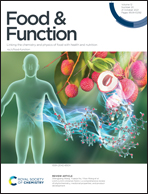Research progress of epigallocatechin-3-gallate (EGCG) on anti-pathogenic microbes and immune regulation activities
Abstract
At the end of 2019, the COVID-19 virus spread worldwide, infecting millions of people. Infectious diseases induced by pathogenic microorganisms such as the influenza virus, hepatitis virus, and Mycobacterium tuberculosis are also a major threat to public health. The high mortality caused by infectious pathogenic microorganisms is due to their strong virulence, which leads to the excessive counterattack by the host immune system and severe inflammatory damage of the immune system. This paper reviews the efficacy, mechanism and related immune regulation of epigallocatechin-3-gallate (EGCG) as an anti-pathogenic microorganism drug. EGCG mainly shows both direct and indirect anti-infection effects. EGCG directly inhibits early infection by interfering with the adsorption on host cells, inhibiting virus replication and reducing bacterial biofilm formation and toxin release; EGCG indirectly inhibits infection by regulating immune inflammation and antioxidation. At the same time, we reviewed the bioavailability and safety of EGCG in vivo. At present, the bioavailability of EGCG can be improved to some extent using nanostructured drug delivery systems and molecular modification technology in combination with other drugs. This study provides a theoretical basis for the development of EGCG as an adjuvant drug for anti-pathogenic microorganisms.



 Please wait while we load your content...
Please wait while we load your content...